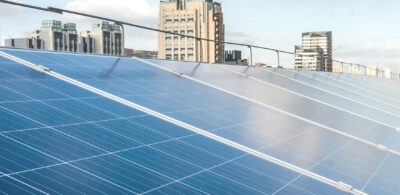Challenges ahead as Victoria caps thermal energy from waste
16 November 2021
The Victorian waste to energy framework will introduce a 1 million tonne per year cap on the amount of waste that can be sent to thermal waste to energy in Victoria to 2040. The waste to energy cap will be implemented in legislation and supported by regulations and by guidance issued by Victoria’s new waste and recycling regulator, with a review of the framework to occur in 2023.
Facilities and processes to which the cap applies
For the purposes of the cap, ‘thermal waste to energy’ refers to any thermal process used:
- to recover energy from waste in the form of heat, which may be converted into steam or electricity; and/or
- to produce a fuel from waste.
Examples include combustion, gasification and pyrolysis (or any hybrid variant).
The following processes are not considered to be ‘thermal waste to energy’ for the purposes of the cap:
- advanced recycling;
- biological waste to energy technologies (including anaerobic digestion and fermentation);
- landfill gas collection and combustion;
- incineration of waste with no energy recovery; and
- thermal processes that recover energy from matters that are not waste.
Facilities that were operating or had a planning permit as of 28 June 2021 do not need to fit within the 1 million tonne per year cap, but must hold a cap licence to process permitted wastes.
Types of wastes to which the cap applies
Waste has been divided into three categories under the framework (permitted waste, banned waste and exempt waste) based on its suitability for use as a thermal waste to energy feedstock.
Permitted waste
Permitted waste, which can be used for thermal waste to energy under a cap licence includes:
- municipal waste collected in a kerbside residual waste bin (provided the council has at least a three-bin kerbside collection system);
- any other municipal residual waste collected in a manner consistent with relevant regulations; and
- commercial waste that has been source-separated in accordance with any existing legislation or regulations, or can be demonstrated through a market assessment to be impracticable to recycle, even after sorting.
Banned waste
Banned waste, which cannot be used in any thermal waste to energy process, is classified as any waste that is not permitted waste or exempt waste.
Exempt waste
Exempt waste, which can be used for thermal waste to energy outside of a cap licence, includes:
- certain streams of dry or fibrous waste biomass that are suitable for thermal bioenergy; and
- hazardous waste.
Facilities that can demonstrate they will only process exempt wastes for the operating life of the facility do not need to hold a cap licence.
Operation of the cap
Thermal waste to energy facility operators need a cap licence to recover energy from permitted waste. It is prohibited for a waste to energy operator to operate a thermal waste to energy facility without a cap licence if one is required, or to operate a facility in a manner that is not in accordance with its cap licence. Cap licences will be allocated through a competitive process coordinated by the waste to energy cap scheme regulator.
This process will operate as follows:
- Expression of interest: the cap scheme regulator calls for expressions of interest. In response, applicants submit basic details about their proposals. The cap scheme regulator may reject spurious responses at this stage.
- Full applications: the cap scheme regulator invites suitable applicants to submit a full application, which will contain all the prerequisite information required by the cap scheme, and responds to the evaluation criteria.
- Assessment: the cap scheme regulator scores each application against fixed, transparent evaluation criteria set and published by the cap scheme regulator. Criteria includes an assessment of the proposed facilities’ resource recovery benefits, greenhouse gas impacts, how well-progressed the proposal is, and whether the facility meets critical waste infrastructure needs in Victoria.
- Grant of cap licence with conditions: the licence will document a process and timeframe for the operator to reach financial close and conditions to apply once the facility is operational. The cap licence is intended to provide certainty to operators at an early stage of facility development, so the project can proceed to financial close and commissioning.
- Monitoring through to commissioning: the cap scheme regulator monitors the operator’s progress towards financial close and commissioning – such as establishing waste supply contracts, energy offtake agreements and financial contracts. If an operator fails to reach financial close and commissioning in the agreed timeframe, the cap scheme regulator may grant an extension, or revoke the licence and reallocate the cap capacity.
- Ongoing monitoring, compliance and enforcement: Once an operator starts processing waste it will have to comply with its licence conditions including ongoing quarterly reporting requirements. The cap scheme regulator will have powers to monitor operators’ compliance and prohibit activities not in accordance with licence conditions. Operators will need to notify the cap scheme regulator of breaches of their licence conditions, or if they reasonably believe they may breach the licence conditions. The cap scheme regulator will have powers to modify licence conditions under certain circumstances, either by agreement with the licensee or unilaterally.
Next steps
Following successful passage of legislation introduced in the Vic Parliament, there will be public consultation on detailed regulations that will outline how the new waste and recycling regulator will administer the cap. The new regulator will commence in 2022, and an initial priority will be the granting of the first round of cap licences.
Key takeaways
The 1 million tonne per year cap will bring some interesting challenges for the sector, particularly given the growing level of focus by international and domestic players on investing and developing energy from waste projects in Victoria. In some respects it is counter intuitive when one considers the environmental benefits of a circular economy and resource recovery. In the near term, it is likely that the proposed throughput capacities of the existing pipeline of EfW projects will well exceed the cap, and hence result in a race to the start line for projects seeking to secure cap licences. The policy is also going to present some real challenges in making sure that there are appropriate and sustainable options available for waste processing as landfills reach their capacities or are otherwise closed. We expect that the policy will also drive faster growth in the sector for those who are able to provide solutions to waste recovery and processing that do not involve thermal technology.
Authors

Partner

Partner

Special Counsel
Law Graduate
Tags
This publication is introductory in nature. Its content is current at the date of publication. It does not constitute legal advice and should not be relied upon as such. You should always obtain legal advice based on your specific circumstances before taking any action relating to matters covered by this publication. Some information may have been obtained from external sources, and we cannot guarantee the accuracy or currency of any such information.


